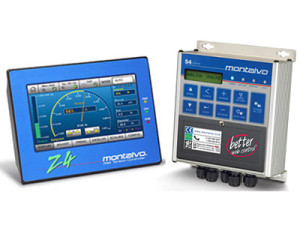In this issue:
BWC Blog: What is Progressive Gain and Why
BWC Blog: When Tension Reading isn’t Steady
BLUE Lifetime Assurance
What is Progressive Gain? Why is it Important?
Most people that are tasked with the tuning of controllers are familiar with three terms; Progressive Gain, Integral Gain, and Derivative Gain, better known as PID. These adjustments are often referred to as “Controller Gain” as they determine the controller’s responsiveness to disturbances. However, in many cases, the dynamic behavior of the actual process may require further action. This would be to prevent the controller from becoming unstable at certain points in the process. This is commonly known as “process gain or progressive gain”. 
In unwinding applications, where there are large build-downs, as roll diameter decreases, the system gain must decrease proportionally to ensure a smooth, consistent, quality process. Progressive gain must be implemented. Without this proportional decrease you run the risk of either lack of response at large diameters and/or instability at the core. Depending on the advancements and capabilities of your controller, traditionally, in order to proportionally decrease the gain, your tension controller will need to know what the diameter of the roll is, typically through the use of an ultrasonic sensor, laser sensor, or proximity sensors. If utilizing a PLC for control it can be very time consuming to create the gain calculation, and can mean additional I/O modules.
However, Montalvo tension controllers already include the Progressive Gain software, and I/O’s for any of the diameter sensing options to deliver the precise adjustments you require right out of the box. Taking this one step further, our latest controller technology has allowed us to utilize progressive gain without a diameter measurement. Simply utilizing tension and output can be precise enough for progressive gain.
Progressive Gain is a critical feature in maximizing your productivity and end product quality when dealing with large build-downs, and is just one of the many standard features we have incorporated into our tension controllers.
View this blog post on Montalvo.com
What to do When Your Tension Reading is Not Steady
When your tension reading is not steady, we often recommend switching the controller into manual mode to help diagnose the problem. If in manual mode and the tension reading is steady, contact a Montalvo Applications Specialist. It may just be simply that the controller is not tuned properly and there just needs to be a minor adjustment. If in manual mode and the tension is still not reading steady this indicates either a mechanical issue with the machine, or a problem with the load cells.
1. The tension is actually stable (no variations at all) but the load cells are indicating that there is a variation.
a. This would usually indicate that either the load cell is not mounted securely to the machine frame, that the clamps holding the shaft are not tight, that the bearing in the roller is bad, or that there is a faulty electrical connection in the cable. First check your load cell installation for any of these issues.
2. If it is evident that the web tension is indeed fluctuating, then the load cells are operating correctly. This can only mean there is some sort of a mechanical issue with the machine or even the material itself. These can be (some noted below):
a. Roll of material not perfectly concentric. This can usually be seen if you watch the roll very closely. Another way to tell is, with no air on the brake; rotate the roll manually stopping it frequently. If you stop the roll and it continues to rotate by itself, then it is not concentric. A perfectly concentric roll should be able to be stopped anywhere.
b. If the shaft holding the roll is held by safety chucks – If you once again rotate the roll and you feel it bump every ¼ or half a turn, this indicates that the chuck or the shaft end is worn. This is very common.
c. Make sure that the brake modules are centered between the brake discs. If one of them is dragging on the disc when no air pressure is applied, readjust it.
d. If the material is very stretchable, the variation can be caused by this. If there is a number of rollers that the material passes over, and if they are all not turning freely or if the material is slipping or not turning a roller, this could also be an issue.
If you have any questions or require further assistance contact a Montalvo Applications Specialist.
Read this blog on Montalvo.com
BLUE Lifetime Assurance
We Are Here for You!
Our commitment to provide you our very best in every way.
BACK to BETTER WEB CONTROL
Things happen. And when they do, our first priority is to get you back up and running as quickly as possible. We want your machine running.
LOCAL ACCESS
In person, phone, e-mail, or online. With four worldwide offices (USA, Germany, Denmark, China) and an authorized licensee & representative network throughout five continents, we give you the local dependability you rely on.
UNCOMPROMISING SERVICE & SUPPORT
Whether you have a single question, need a tension control consultation, or require technical support or service, we are committed to you for the entire life of your Montalvo products and beyond. We are here for you!
EXPERTISE
Since 1947, Montalvo has differentiated itself by offering more than just high quality and high performance tension control products. We are your resource for the tension control expertise required to expand the capabilities of your machinery and production line.
Learn more about Montalvo BLUE Lifetime Assurance


